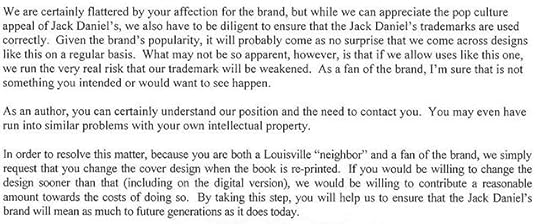Christopher Sprigman's Blog, page 13
August 29, 2012
Freakonomics runs a “tweakonomics” excerpt from The Knockoff Economy
 The Freakonomics blog runs an except from the book where we talk about innovation in music — specifically, how musicians copy — and tweak — other artist’s songs. We all know these as “cover” songs. They are immensely important in our musical culture — some of the best pop music ever (Hendrix’s version of Bob Dylan’s “All Along the Watchtower”, anyone?) has been covers of others’ songs. And all this innovation is made possible, in part, because American copyright law allows it to happen. Anyone is free to record a cover version of another songwriter’s composition — as long as they pay a (very low) fee. And the freedom to cover hasn’t stopped people from writing new songs. It’s an important case of innovation without intellectual property, one which we see (actually, hear) everyday but don’t ever really notice.
The Freakonomics blog runs an except from the book where we talk about innovation in music — specifically, how musicians copy — and tweak — other artist’s songs. We all know these as “cover” songs. They are immensely important in our musical culture — some of the best pop music ever (Hendrix’s version of Bob Dylan’s “All Along the Watchtower”, anyone?) has been covers of others’ songs. And all this innovation is made possible, in part, because American copyright law allows it to happen. Anyone is free to record a cover version of another songwriter’s composition — as long as they pay a (very low) fee. And the freedom to cover hasn’t stopped people from writing new songs. It’s an important case of innovation without intellectual property, one which we see (actually, hear) everyday but don’t ever really notice.
Knockoff hipsters
From a friend and former student comes an example of knockoffs in the advertising industry. Hipster apparel maker The Real McCoy’s is not exactly setting a standard for originality with its nearly point-by-point knockoff of the ad campaign for rival purveyor to the young, rich, and fey, imogene + willie. Here’s 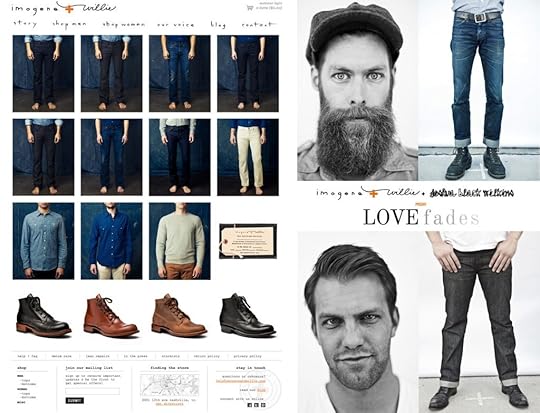 the i+w original:
the i+w original:
And here’s the knockoff from The Real McCoy’s. Judge for yourself: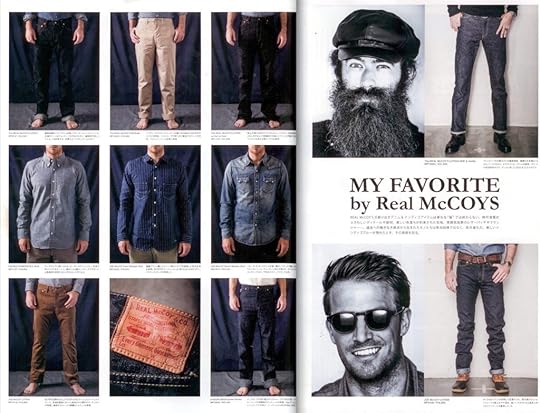
Does this Chinese cabbie love Louis Vuitton? Or hate them?
 From a faithful student correspondent (who won’t be named so that Louis Vuitton’s famously aggressive lawyers won’t try to seize his camera), comes this picture taken from the back of a taxi tooling around Xi’an, China. What you see is a mud-covered “Louis Vuitton” floormat. Although of course Louis Vuitton, the famed luxury goods manufacturer, would never, never make floormats for cars.
From a faithful student correspondent (who won’t be named so that Louis Vuitton’s famously aggressive lawyers won’t try to seize his camera), comes this picture taken from the back of a taxi tooling around Xi’an, China. What you see is a mud-covered “Louis Vuitton” floormat. Although of course Louis Vuitton, the famed luxury goods manufacturer, would never, never make floormats for cars.
This is obviously a fake. Less obvious is the message it’s meant to send. Is this homage to LV by a cabbie who wants to class up his ride? Or, is this cabbie subverting the creeping capitalist takeover of his country by encouraging his customers to wipe their feet on this symbol of Western decadence and excess?
Hard to tell. But we’re confident that LV’s lawyers would be furious either way. LV is (in)famous for its rabidly aggressive responses to unauthorized uses of its brand. A few years back they sued Haute Diggity Dog, a pet products company that markets, among other things, a “Chewy Vuiton” dog chew toy, which was shaped like a woman’s handbag and used a “CV” mark similar to Vuitton’s “LV”. Here it is: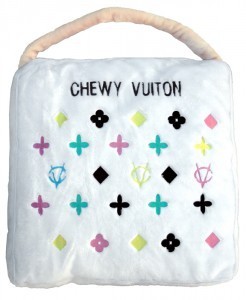
LV lost the case — Haute Diggity Dog’s chew toy, the court held, was a parody of the LV handbag, and Vuitton could not use its trademark rights to suppress Haute Diggity’s First Amendment rights to make a lawful parody.
After that loss you might think Vuitton would re-think their approach. But instead, they doubled down. In February of this year Vuitton threatened to sue the University of Pennsylvania when it found out that students at Penn’s law school were planning an academic conference on trademarks in the fashion industry (sic). Vuitton objected to the parodic use of its mark in this poster advertising the conference:
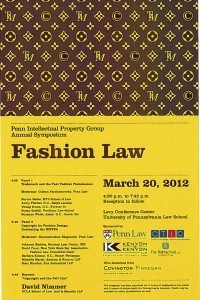 As you can see, the poster uses the letters “TM” in the shape of Vuitton’s LV. Clever? Yes. Confusing to consumers? Um, no. No one in the market for a Vuitton handbag is going to rock up at an academic conference in Philadelphia, or is even likely to think that Vuitton has anything to do with it. But to the lawyers at LV, who must sleep in their suits, this was an outrage. They fired off a nastygram to the university, ordering them to take the poster down, and chastising the Penn law faculty for not “understand[ing] the basics of intellectual property law.” After consultation with some of the IP faculty at the law school, Penn politely told LV to go fly a kite. Penn’s letter to LV is a masterful piece of cutting understatement.
As you can see, the poster uses the letters “TM” in the shape of Vuitton’s LV. Clever? Yes. Confusing to consumers? Um, no. No one in the market for a Vuitton handbag is going to rock up at an academic conference in Philadelphia, or is even likely to think that Vuitton has anything to do with it. But to the lawyers at LV, who must sleep in their suits, this was an outrage. They fired off a nastygram to the university, ordering them to take the poster down, and chastising the Penn law faculty for not “understand[ing] the basics of intellectual property law.” After consultation with some of the IP faculty at the law school, Penn politely told LV to go fly a kite. Penn’s letter to LV is a masterful piece of cutting understatement.
Why is Vuitton so aggressive? One reason might be that, at least in the past, judges in trademark cases would occasionally hold that a trademark that had not been aggressively enforced was abandoned. But those holdings are increasingly decrepit, and courts in recent years have been much less ready to hold trademarks abandoned because of non-enforcement. So there must be something else going on here. Maybe LV’s lawyers want to be known as the baddest guys on Madison Avenue. Well, if that’s your motivation, when you do file or threaten a lawsuit, it’s important that you win.
August 28, 2012
Google Nexus 7 — a patent lawsuit waiting to happen?
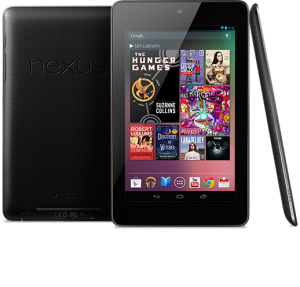 So Google today released its new Android-based tablet computer, the Nexus 7. It’s rectangular. Doesn’t Google know that Apple owns the rectangle? Cue the Apple patent lawyers . . .
So Google today released its new Android-based tablet computer, the Nexus 7. It’s rectangular. Doesn’t Google know that Apple owns the rectangle? Cue the Apple patent lawyers . . .
The Knockoff Economy on The Brian Lehrer Show
 Sprigman guests today on the Brian Lehrer show, talking about the Apple/Samsung litigation and the future of innovation in the market for smartphones. Take a listen here.
Sprigman guests today on the Brian Lehrer show, talking about the Apple/Samsung litigation and the future of innovation in the market for smartphones. Take a listen here.
August 27, 2012
Techdirt: “Can you trademark your pot?”
 And we’re not talking about the sort of pot you cook in.
And we’re not talking about the sort of pot you cook in.
Writing on the techdirt blog, law and technology expert Mike Masnick takes note of our musings on whether marijuana trade names can be trademarked, and then suggests a (probably more important) question of his own:
“While Raustiala and Sprigman don’t get into it, it would seem like this creates another “pure” market to study, to see what happens in a brand-based market without trademark protections. Is copying of brand names common? Do less potent forms of pot try to draft off of more famous brands? Or does the market have a way of working itself out? It seems like a worthwhile market to study for someone enterprising.”
We agree. The emerging market in pot — well, it’s pretty emerged at this point in California — deserves a lot more study on a number of fronts. One is how the absence of IP protections affects innovation and marketing practices. Of course, studying something that’s mostly illegal and at best borderline respectable is perhaps not the best way to work one’s way up the academic ladder. But whatever. There must be some adventurous professor in a law or business school, or perhaps an economics or anthropology department, who would be willing to take a hit. So to speak.
UPDATE: And now uber-blogger Andrew Sullivan is jumping in to the fray!
The Knockoff Economy on Marketplace
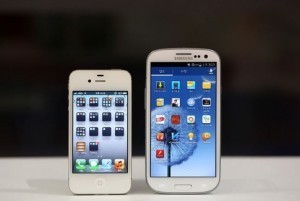 One of us (Sprigman) was interviewed for today’s Marketplace radio program on the subject of the Apple v. Samsung verdict. He was asked whether the verdict is good news for consumers. Answer: probably not. Take a listen.
One of us (Sprigman) was interviewed for today’s Marketplace radio program on the subject of the Apple v. Samsung verdict. He was asked whether the verdict is good news for consumers. Answer: probably not. Take a listen.
August 26, 2012
Architectural Copying
In the US, architectural designs are protected against copying thanks to the Architectural Works Copyright Protection Act of 1990. That works for an office building or residential design. But what about an entire town?
As with so many of the most interesting, and extreme, examples of copying, we need to look to China for an example. As this story describes, an entire Austrian village is being recreated in the Chinese countryside. Crazy.
Here’s a look at the “Hallstatt Villa” project in Boluo county, Huizhou:
[image error]
August 24, 2012
Apple wins a huge patent victory over Samsung
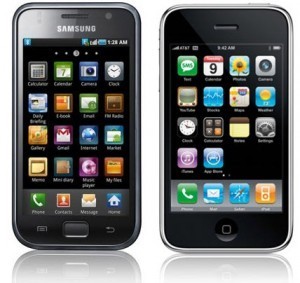 News tonight that Apple has prevailed on nearly all fronts in its patent battle against Samsung over the technology and design of its iPhone and iPad, which Apple says Samsung copied.
News tonight that Apple has prevailed on nearly all fronts in its patent battle against Samsung over the technology and design of its iPhone and iPad, which Apple says Samsung copied.
The case involved seven Apple patents in all, and the jury held that Samsung had infringed six of them. The verdict holds that Samsung has infringed three Apple utility patents covering specific key functions in the Apple products, like pinch-to-zoom, tap-to-zoom, and one-finger scrolling, as well as two Apple design patents covering the rectangular exterior shape of the iPhone and a third Apple design patent covering the way in which icons appear on the iPhone’s screen. Samsung was held not to have infringed one Apple design patent covering the rectangular design of the iPad.
The jury awarded Apple $1.05 billion dollars in damages. Not quite the largest patent verdict in history, and a small percentage of Apple’s revenues (more than $108 billion in 2011) or Samsung’s (more than $247 billion in the same year), but still an eye-popping amount. The jury also rejected all of Samsung’s patent claims against Apple.
So, what now? Samsung says it will ask the trial judge to review the jury’s verdict, and, if the judge refuses to overturn it, will appeal to a higher court. But assume for the moment that today’s verdict stands. Two things might happen. Apple may decide to make a lot of money licensing its patents to rivals like Samsung. But nothing requires Apple to license, and it is also possible that Apple may choose to deny Android-based phones like Samsung’s access to important features like pinch-to-zoom. If Apple goes this route, we might expect companies like Samsung to attempt to differentiate their phones from Apple’s, in a bid to give consumers attractive options without running afoul of Apple’s patents. Can they do this? Some of the features that Apple may now have locked up seem pretty basic to the functioning of a smartphone. And if that’s the case, then today’s verdict is very bad news for competition and consumers.
Trademark owners are incentivized (some would say force...
Trademark owners are incentivized (some would say forced) by our legal system to aggressively go after anyone who uses their mark in unauthorized way. That can include knockoffs of a mark. The typical response is a very threatening cease and desist letter.
Every once in awhile, though, someone takes a different tack. Here is an interesting example of a much friendlier, and we would argue, norm-reliant, approach. What do we mean by norm reliant? In The Knockoff Economy, we discuss the role that informal, extra-legal social norms play in policing copying. Comedians, for example, rely heavily on them to control copying within the ranks of stand-ups.
In its letter to the book author whose cover appropriated the distinctive Jack Daniels label, Jack Daniels is invoking norms of fairness, as well as affection for the brand, and offering to cooperate. I don’t know how it all turned out, but would love to find out. Thanks to Mashable for the story:
Here is the letter:
